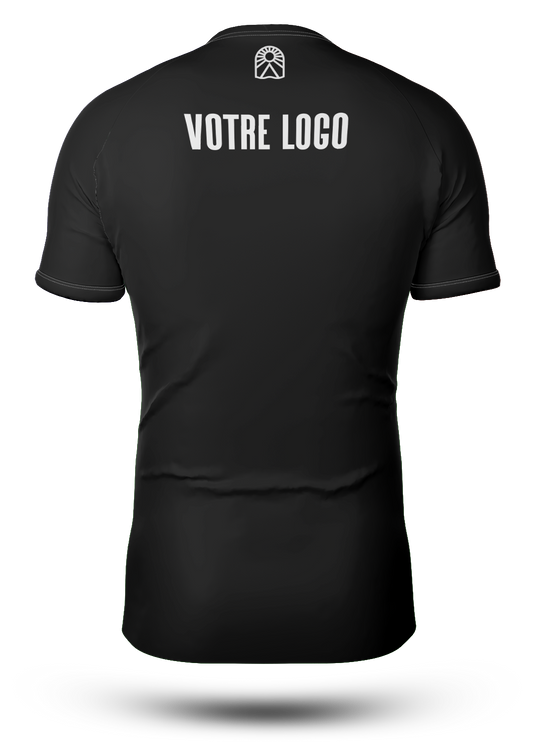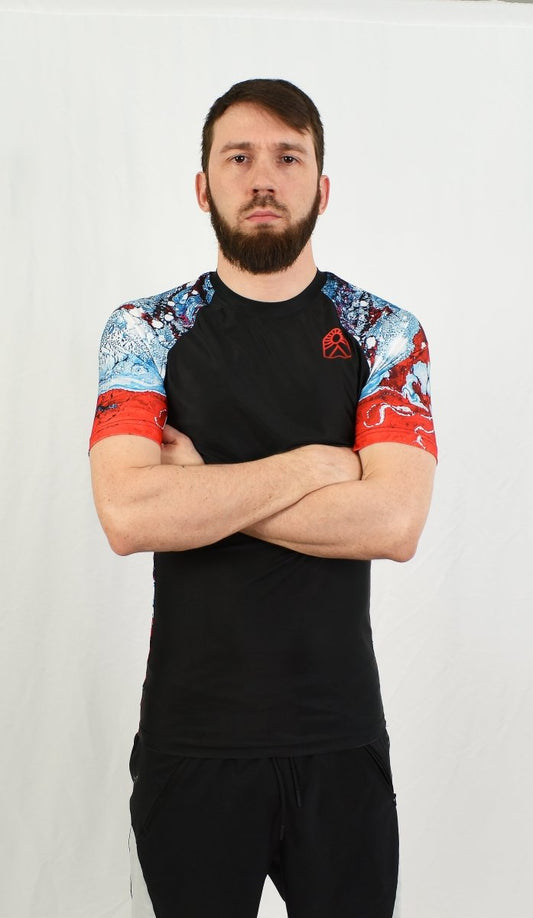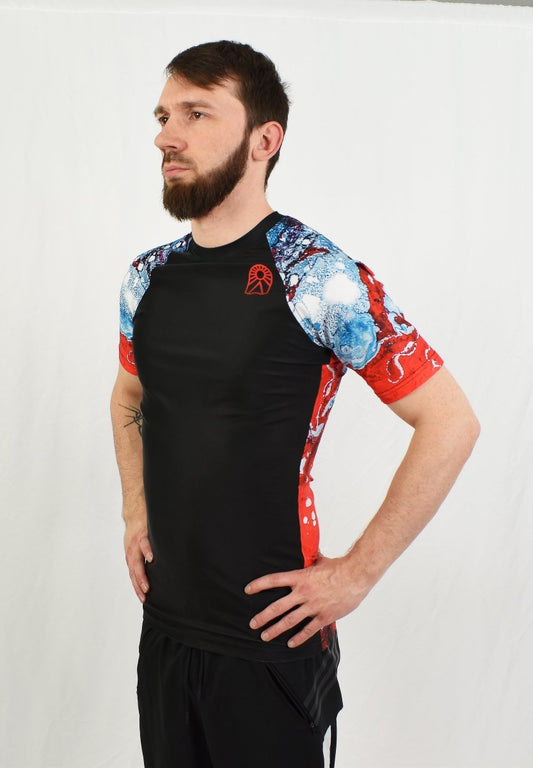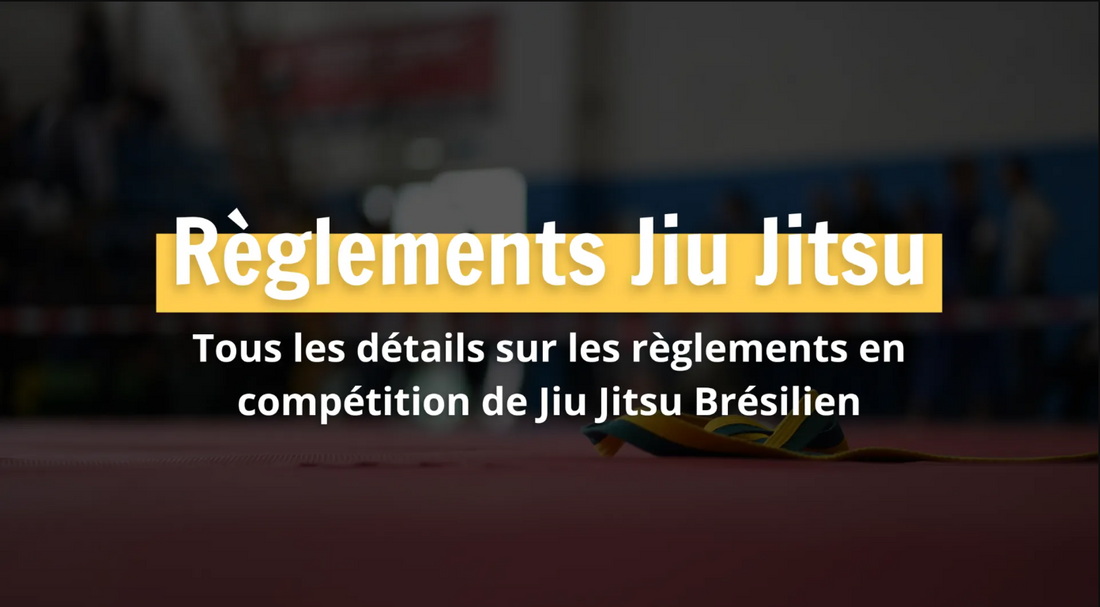
Brazilian Jiu Jitsu: All the Rules and Regulations in BJJ
Pascal CadoretteAre you a Brazilian Jiu Jitsu (BJJ) practitioner and interested in EBI, IBJJF, ADCC, etc. competitions? Brazilian Jiu Jitsu is a martial art that is rapidly gaining popularity worldwide. We are seeing more and more competitions all over the world and with platforms like UFC Fight Pass streaming Jiu Jitsu nights, it is becoming easier and easier to get interested and watch grappling matches. However, Jiu Jitsu is not as simple as MMA in terms of points. There are different rules and regulations to follow to win in competition and depending on the organization, it can differ.
In this article, we will introduce you to all the fundamental rules of Brazilian Jiu Jitsu. You will discover how to score points, how to perform submissions, and how official competitions take place. We will also give you tips on how to prepare well before a fight and how to improve your technique and if you feel like it, you can even consult the 10 most common submissions in Jiu Jitsu , to prepare you for your next competitions!
Whether you are a beginner or an advanced practitioner, this article will help you deepen your knowledge of Brazilian Jiu Jitsu and improve in this fabulous sport.
The rules Brazilian Jiu Jitsu
Let's dive right into the heart of the matter: Brazilian Jiu Jitsu (BJJ) is a martial art 100% based on what is called Grappling , a method of fighting similar to wrestling that involves throw his opponent to the ground, control and finally, immobilize it with a submission . Unlike MMA, in Jiu Jitsu there are no kicks or punches of any kind. It is 100% based on controlling your opponent's body. Which can make reading the sport more difficult and less straightforward.
Brazilian Jiu Jitsu therefore has a set of rules that govern competitions and fights and that regulate the control of the opponent's body and the submissions that are exercised. These rules are designed to ensure the safety of practitioners and promote fairness in the practice of BJJ. In this article, we will mainly rely on the rules of the Fédération Québécoise de Jiu Jitsu Brésilien (FQJJB) , but be aware that there are many federations and organizations with their own rules. To download the complete guide to the regulations, go here
An important first rule concerns the different positions and control positions. Fighters can score points by taking control of their opponent, obtaining dominant positions and performing submissions. The main objective is to reward the technical and tactical skills of the fighters.
Finally, there are also rules regarding the clothing worn (No gi as well as Gi) during the fights, time limits and faults that can result in penalties. It is essential for practitioners to understand these rules in order to participate in the competitions fairly and safely.
Weight categories and divisions in Brazilian Jiu Jitsu
Brazilian Jiu Jitsu uses weight classes to ensure fair competition between fighters. There are usually several weight classes, note that some classes may be different depending on the organization. But generally the classes are as follows:
- Absolute: Open weights
- Super Super Heavyweights: +100.5 kg
- Super Heavyweights: -100.5 kg
- Heavyweight: -94.3 kg
- Medium heavy weight: -88.3 kg
- Average weight: -82.3 kg
- Lightweight: -76 kg
- Featherweight: -70 kg
- Super featherweight: -64 kg
- Bantamweight: -57 kg
Fighters are grouped by weight to avoid size and strength imbalances that could influence the outcome of fights. However, if a fighter desires, there are open weight classes that allow anyone to compete against anyone!
Yes, it is possible for a -64Kg fighter to find himself against a +100.5Kg fighter! This has already happened with the fighter Demetrious "Mighty Mouse" Johnson who weighed 61Kg against a fighter who weighed 113Kg!
In addition to weight classes, there may also be divisions based on the experience level of the fighters. This allows beginners to compete against other beginners and advanced fighters to compete against opponents of their own level.
The Point System in Brazilian Jiu Jitsu
Since the goal is to control and submit your opponent, sometimes neither fighter can do it because both fighters are able to defend themselves well. In this case, we use a point system that determines a winner if there are no submissions.
For the point system, we will base ourselves on the IBJJF (International Brasilian Jiu Jitsu Federation) system, since it is the most widespread system.
The points system
Points will be awarded based on certain control, stances, or throws. Awarding points for these types of moves rewards initiative and progression in combat. Points are scored after the stance is held and controlled for 3 seconds.
- 4 points – Mounting, back control
- 3 points – Pass the guard
- 2 points – Knee to belly, sweep from guard, throw to ground
In addition to points, there can also be advantages and penalty points that can be awarded, during a match.
The Advantages
An advantage is gained when a fundamental move is initiated but not fully completed, this could be a submission, sweep, takedown, or pass attempt. Think of it a bit like a half point. The goal is to tip the scales one way or the other if the match is tied. Here are the different types of benefits that can be awarded:
-
Advantage of projection – An advantage is gained with a ground throw when there is a visible loss of balance or the throw is performed outside of the designated area.
-
Guard Pass Advantage – If the player above passes the guard and the player below stops the pass by twisting, an advantage is awarded, because the pass is not completely completed, but there was a significant attempt.
-
Sweeping Advantage – If a guarding player attempts a sweep and it is nearly completed, an advantage may be granted based on the progress of the sweep.
- Advantage of submission – If a submission is attempted, forcing a player to defend, the attacker will gain an advantage if they are unable to complete the submission.
Submissions
Here, it is about the finality that automatically gives victory to the one who applies the submission. A submission occurs when a strangulation or joint lock technique is applied, which causes another player to admit defeat in the following manner:
-
Physical submission – If the defeated player taps the mat or the other competitor with his hands or feet, this is considered the physical sign of submission, referred to as the "Tap" .
-
Verbal submission – If a competitor verbally says that he is defeated, that is, by verbally saying "Tap" Or “Stop” , screaming in pain, etc., then he admits defeat.
-
Unconsciousness – If a competitor becomes unconscious during the bout due to a choke or other means, it is an automatic loss by submission.
-
Give up - If a coach decides to intentionally give up and end the match, it is considered a loss for the competitor.
-
Decision of the referee – If a referee determines that a competitor is likely to be seriously injured during a submission hold, he may decide to stop the match and award the victory.
- Requesting a timeout due to pain – If a timeout is called due to pain, it is considered a verbal submission. Some exceptions may occur, also depending on the referee's discretion, i.e. if the timeout is given because a competitor was kicked in the genitals or there was an illegal move.
Fouls and penalties in Brazilian Jiu Jitsu
As with any sport, there are rules and fouls that must be followed during Brazilian Jiu Jitsu fights. Fouls can vary depending on the competition and organization, but some common fouls include:
- Direct hits or kicks.
- Finger or toe holds.
- Throat or eye sockets.
- Dangerous or disrespectful movements.
- Unsportsmanlike behavior.
In the event of a foul, a fighter may receive a penalty, which may result in a point deduction or even disqualification, depending on the severity of the foul.
Certain movements or submissions may be prohibited depending on the fighters' experience level or age. For example, a Knee Bar (knee extension) is prohibited for fighters who are not at least brown belts in Brazilian Jiu Jitsu. To learn more about the different belt ranks, see the article: The ULTIMATE Guide to Brazilian Jiu-Jitsu Belts: From White to Black and Beyond

(Photo source: attacktheback.com )
Brazilian Jiu Jitsu Competition Rules
Brazilian Jiu Jitsu competitions are typically held in a tournament format, with fighters competing in their respective weight class and division to determine the winner of each match.
Competitions can be organized according to different tournament systems, such as the single-elimination system or the double-elimination system. In single-elimination systems, fighters are eliminated as soon as they lose a match, while in double-elimination systems, fighters are given a second chance if they lose their first match.
Competitions may also have time limits for each match. These time limits can vary depending on the level of competition, but are typically 5-10 minutes for amateur fights and 10-15 minutes for professional fights.
In the event of a tie at the end of the allotted time, the judges may consider different criteria to determine the winner, such as the number of points scored, submission attempts and dominance during the fight. There may also be an overtime period in which one opponent starts in a submission hold and must escape as quickly as possible. The winner is the one who escapes the fastest.
Clothing permitted and not permitted in competition
The rules also extend to the kimono and certain clothing that competitors can wear. Since there are 2 categories of Brazilian Jiu Jitsu: Gi and No-Gi, there are regulations regarding the size of one's kimono and clothing.
The whole purpose is to ensure uniformity of equipment and that each competitor uses equal and fair equipment among themselves.
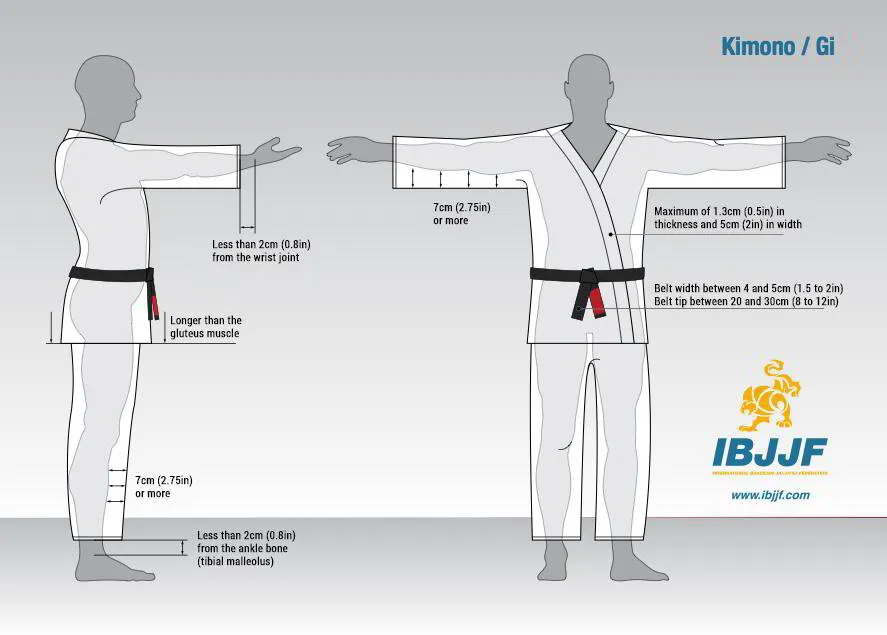
The Kimono (Gi)
Having a good Jiu-jitsu gi is essential when you compete under the IBJJF rules. Do you want to know why there are so many gi vendors at the competition? It's so you can get a new one in case your gi is not legal. Let's see what that means.
-
Material – A BJJ competition gi must be constructed with a woven cotton fabric. Ripstop or canvas jackets are not allowed under IBJJF rules. The material must not be too thick or hard, as this will interfere with other competitors. Pants must be made of cotton or ripstop fabric, no denim or nylon is allowed.
-
Sizing – A Brazilian Jiu Jitsu Kimono should be of sufficient length to the competitor’s thighs and the jacket sleeves should reach well past the competitor’s wrists when the arms are extended forward and to the side. Pants should reach to the competitor’s ankles and should not be too tight.
-
Quality – The jiu-jitsu gi should not have any tears or compromise in its construction.
-
Color – The IBJJF requires competitors to wear a white, blue or black gi. No other colors are allowed.
- Patches – There are specific requirements regarding the placement of kimono patches. Some competitors like to display sponsors, brands or other insignia, below are the permitted locations where patches can be placed.

The belt
The belt is also subject to certain regulations since certain submissions, in gi, require the use of the belt. It is therefore subject to certain regulations :
-
Color – A jiu jitsu belt must be the same color as the division you compete in.
-
Sizing – A regulation belt should be long enough to allow for sufficient lengths at the end of the knot. The width of the belt should also be between 4 and 5 cm
-
Scoring Bar – In all IBJJF competitions, a scoring bar must be present on the belt.
- Tied – a jiu jitsu belt should be tied tightly enough around the waist to keep the kimono jacket closed
No-gi ( ashguards and shorts)
It is also possible to compete in No-Gi Jiu Jitsu, which is the same kind of competition, but without a gi. The holds and submissions are a little different and the uniform is usually a Rashguard and shorts or shorts compression or leggings for women.
Rashguards:
Both sexes must wear a rashguard made of elastic fabric (tight to the skin) long enough to cover the torso up to the waistband of the shorts, in black, white or black and white, and with at least 10% the color of the competitor's belt rank.
Rashguards 100% in the color of the athlete's rank (belt) are also permitted.
Please note: For black belts, a small red area will be tolerated, but must not distort the color of the athlete's ranking.
Luckily, if you are shopping for a Solar rashguard, you will find the approved rashguards on our jiu jitsu rashguard store.
Men's Shorts:
As for shorts, there are also rules to follow. Shorts must be black, white, black and white and/or the color of the competitor's belt rank.
It is also important that they are pocketless or have the pockets sewn completely closed to prevent an opponent from getting caught or tangled in the pockets.
Shorts must be free of buttons, visible cords, zippers or any form of plastic or metal that could pose a risk to the opponent,
Finally, they also need to be long enough to cover at least half of the thigh, and no longer than the knee. Luckily, all of Solar's grappling shorts are IBJJF compliant, so you can be sure you won't be breaking any rules!
Compression shorts made of elastic material (tight) worn under the shorts, in the colours black, white, black and white and/or the colour of the grade (belt) to which the athlete belongs are also permitted.
Women's Shorts, Compression Shorts & Leggings:
Compression shorts, shorts or leggings are permitted and must be black, white, black and white, and/or the color of the rank (belt) to which the athlete belongs.
Shorts must not have pockets or have the pockets sewn completely closed, must not have buttons, zippers or any type of plastic or metal that could pose a risk to the opponent, and must be long enough to cover half of the thigh and no lower than the knee.
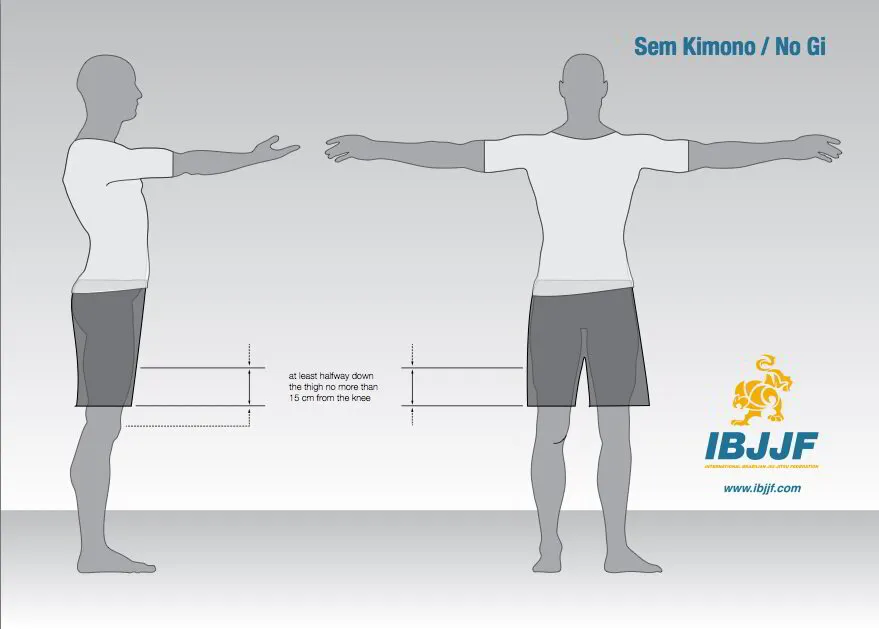
Fortunately, the IBJJF offers free classes and training to learn the rules for Jiu Jitsu competitions and ensure you are 100% compliant!
Sources of the article:


